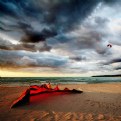
Giulio R.

Michele C.

Salvador María L.

Adam O.

Bill V.

Maria H.

Danny P.

Roberto A.
 Giulio R. |
 Michele C. |
 Salvador María L. |
 Adam O. |
 Bill V. |
 Maria H. |
 Danny P. |
 Roberto A. |
 |
|
Your photo sharing community! |
|
||||||||||||||
|
| Log in to post a response to this question |
Return To Photography Forum Index |
|
| FAQ | Terms of Service | Donate | Site Map | Contact Us | Advertise | Copyright ©2013 Absolute Internet, Inc - All Rights Reserved |